When English ships first arrived in Sydney Cove in 1787, over 250 languages were spoken by Indigenous Australians. Now, less than half remain, with many communities facing the looming reality of language and cultural extinction. This cultural crisis has led many Indigenous Australian elders to adopt alternative ways of passing down their knowledge to the coming generations.
The foundations of Wunungu Awara were laid in 1980, when project director John Bradley, moved to Borroloola as a primary school teacher, beginning a four decades long relationship with the Yanyuwa community. During this time the Yanyuwa people witnessed their number of fluent Yanyuwa speakers drop from over two hundred to under five speakers. This decline in cultural participation has prompted senior Yanyuwa members to seek alternative means for language and cultural preservation, and encouraged younger generations of Yanyuwa members into active participation in the continuation of their culture.
John also witnessed first hand the lack of understanding displayed by non-Indigenous colleagues towards Indigenous history and culture in Australia. As a result he began a career in research and academia, working with the Yanyuwa people, learning their language, stories and songs. By the early 2000’s he had documented with Yanyuwa families close to 30 Dreamings, ten songlines, the Yanyuwa dictionary, Yanyuwa Atlas and Yanyuwa Encyclopedia. John’s original idea was to create a graphic novel of Yanyuwa Dreamings, but he felt that this medium couldn’t capture the essence of the stories. However, this documentation would serve as the backbone of the early Wunungu Awara animations; storyboards, character designs, narrative structures and even early draft scripts.
In early 2007, a chance meeting between John Bradley and Monash University researcher Tom Chandler led to the discussion of animation as a tool for reconstructing and visualising the past. Chandler had since been using 3D animation for archaeological recreations of Angkor Wat. Little did Tom know that John actually had a treasure trove of documentation he’d been working on with the Yanyuwa community and was very interested in animating the Yanyuwa dreaming narratives.
Within a few months Tom arranged a meeting between John Bradley and animator Brent D McKee. This meeting involved a crash course in Yanyuwa history; Songlines, Dreamings, the relationships between the two and the Laws they create. John walked over to a huge map of the Gulf of Carpentaria on his wall and explained to Tom and Brent how in the old days, men and women would walk through ‘country’ singing Kujika (songlines). He pointed to a large bend in the Wearyan River, 90km east of Borroloola, a place called Manankurra (Manangoora). He then showed the animators two colour photocopied A3 illustrations, explaining that these were a visual representation of the first 25 verses held within the Songline. This particular Kujika extended from Manankurra, 50km to the north, with these two images visualising only the first kilometre. Kujika verses would include everything from animal life, plants, trees, rivers, and fresh water springs to the actions of people past and present.
John’s inquiry was to whether there was any possibility that Kujika could be represented using 3D animation, because, he said, “If we can animate Kujika, we can animate anything.” Not wasting any time, Tom pulled from his backpack a MiniDisc recorder and a microphone and John sang directly the 25 verses of the Manankurra Kujika. The two animators left John’s office with the two A3 images, an A4 document with the 25 verses and one hour worth of Yanyuwa history. The animators got to work and thus began the Wunungu Awara animated Archive.




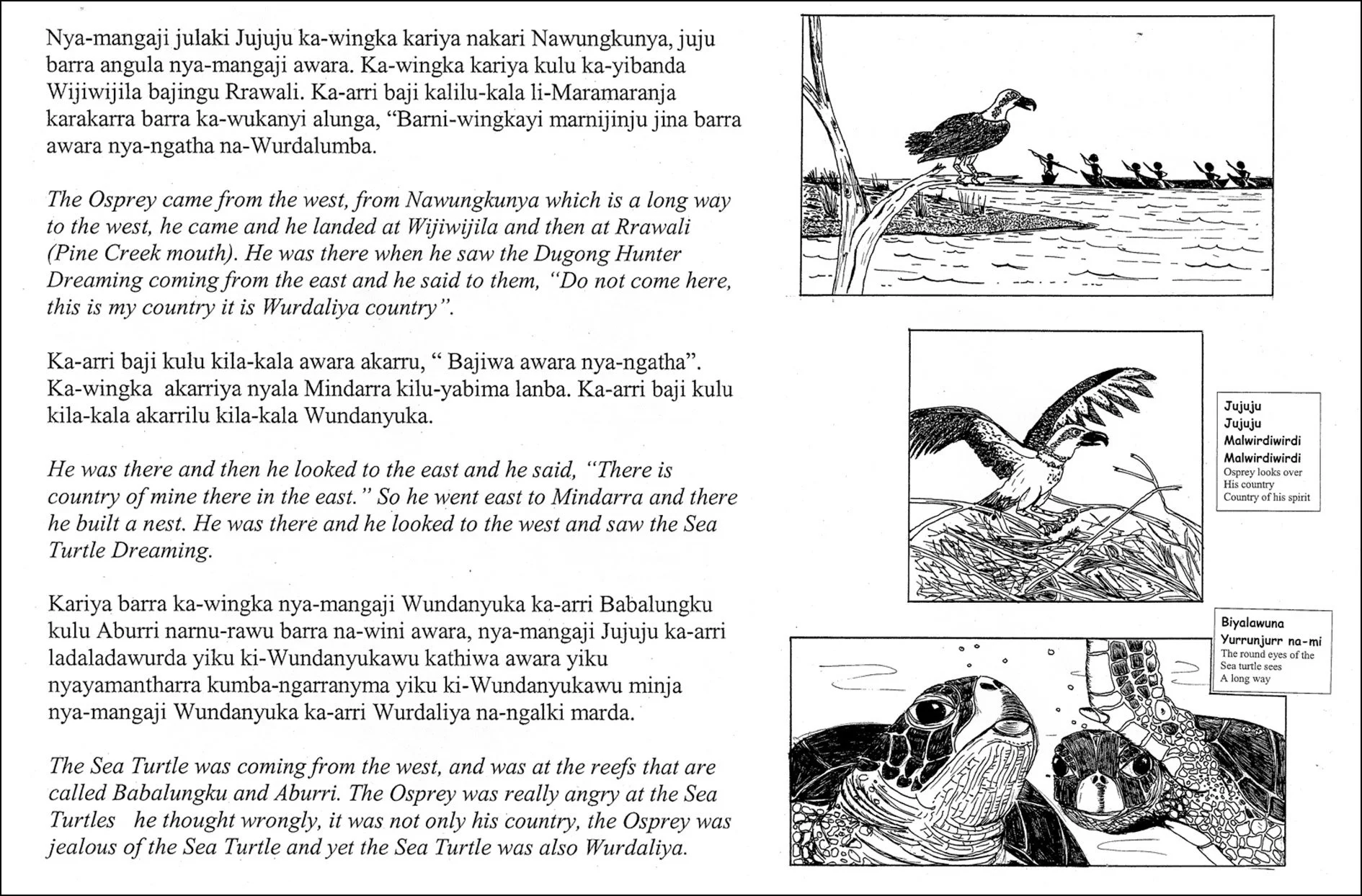

“The Song of the Tiger Shark at Manankurra”, the first ever Wunungu Awara animation was completed in November 2007. Production began in July 2007 with an initial concept design by Brent D McKee which was sent to John via email, then off to the Yanyuwa community. This single image was a simple 3D scene textured with scanned cardboard and spray painted paper, two textures that would be used in the design for the following five animations.
Given the go ahead by the community, Brent and fellow animator Chandara Ung got working on building the assets that need to be created before animation could begin, with Chandara focusing on characters and Brent on environments. Several more images were sent back to the community, again the animators were given the go ahead to continue. The animation process took approximately three months, taking one month to render the final images. Being 2007, the completed animation was sent back to the community via ‘snail mail’ on a DVD.
Being one of the first animations that Brent and Dara had worked on, they had little animation experience to draw upon and even less of an understanding of the complexities of Indigenous content. Nonetheless they did what they could, taking the source material and John’s wealth of knowledge, and managed to throw something together. Amongst the community the animation was a great success, Yanyuwa elders were hearing children sing in language for the first time in generations. Even if they had just been reciting lines from the animations without knowing what they were saying, the animation had sparked a new interest among young Yanyuwa people to learn and ask questions about their culture.
With little time to look at improvements, or even an understanding of how they could improve at this point, the team jumped straight into the next five animations. They used the same models and varied the environments slightly to create a different look for each animation. The team jumping straight into the recording studio with John acting out the animations. In some respects, the way they rushed through these early animations was a good learning curve; a “how not to” way of animation production. But it was how it was, rushing through production and sending the five completed animations back to the community via DVD; "Malarrkarra kulu a-Wangka (The Chicken Hawk and the Crow)”, “Li-Maramaranja (Dugong Hunters)”, “Kurdarrku (The Brolga)”, “Ngabaya (Spirit People)” and “Ngurdungurdu (The Tiger Shark)”. Once again, the community loved them. In this fashion, by the middle of 2010, the team had completed seven animations for the Yanyuwa community.
These early animations did achieve a deal of success nationally with the Yanyuwa community giving permission for some to be screened publicly on television and at film festivals around Australia. In 2008, “The Song of the Tiger Shark at Manankurra” screened on an episode of ABC’s Compass, titled “Language Man”, which traced part of John Bradley’s story to and from Borroloola. In 2010, ACMI in Melbourne held ‘U-matic to Youtube’, which screened “Wirdiwalangu Mayangku kulu Anthawirriyarrawu (The Law that comes from the Land, the Islands and the Sea)” and “Narnu-Yuwa ki-Anthawu (The Dreamings from the Saltwater Country)” followed by a QandA session. There were several points revealed after this event. Firstly, it was all in a day's work for John, but for the animation team a first glimpse into the politics involved in working with Indigenous knowledge. Secondly, though the animations were well received as being interesting and showing a great concept, there were comments about low audio and render quality and inconsistent narrative pacing which was food for thought for the animation team.
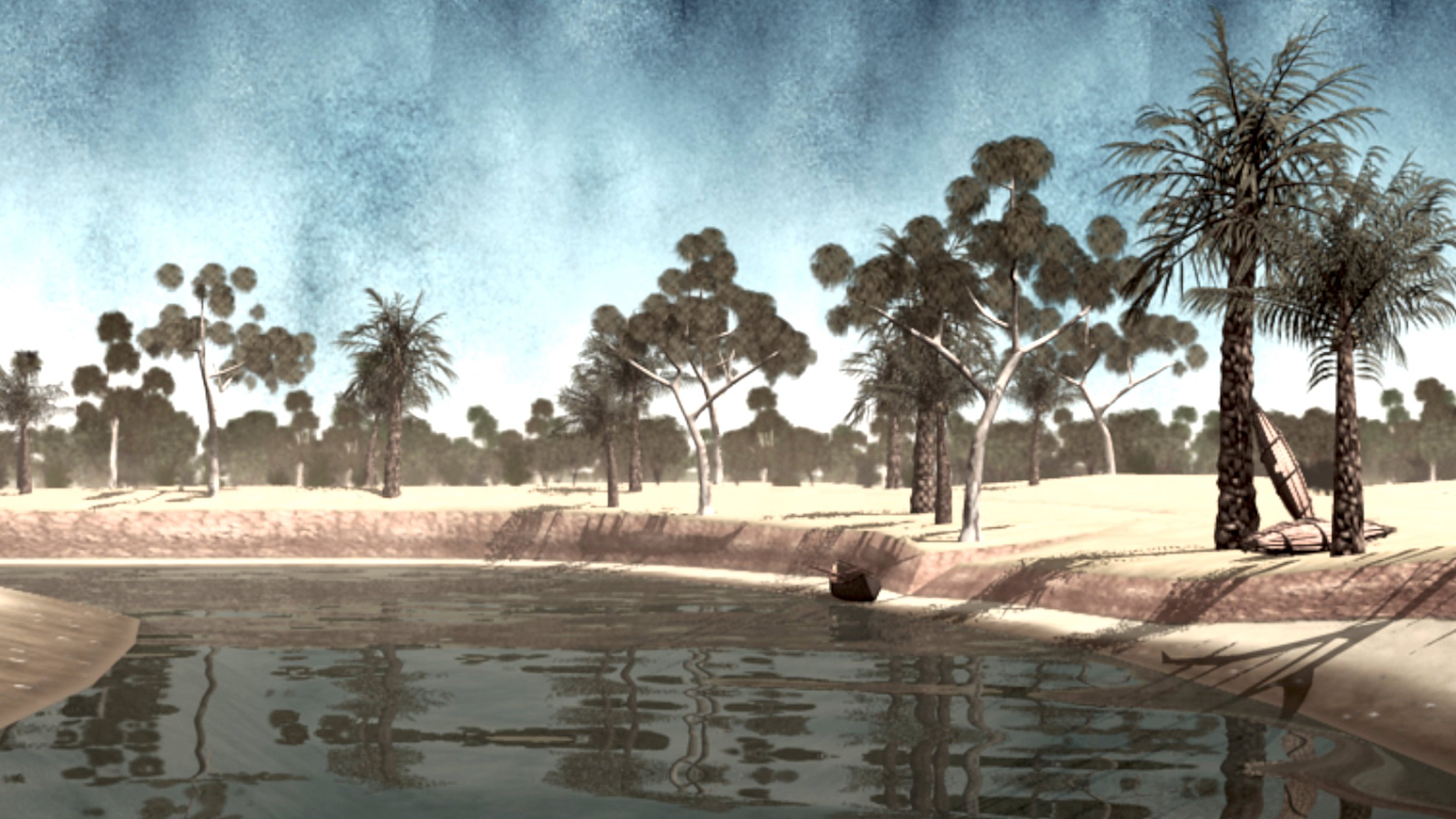
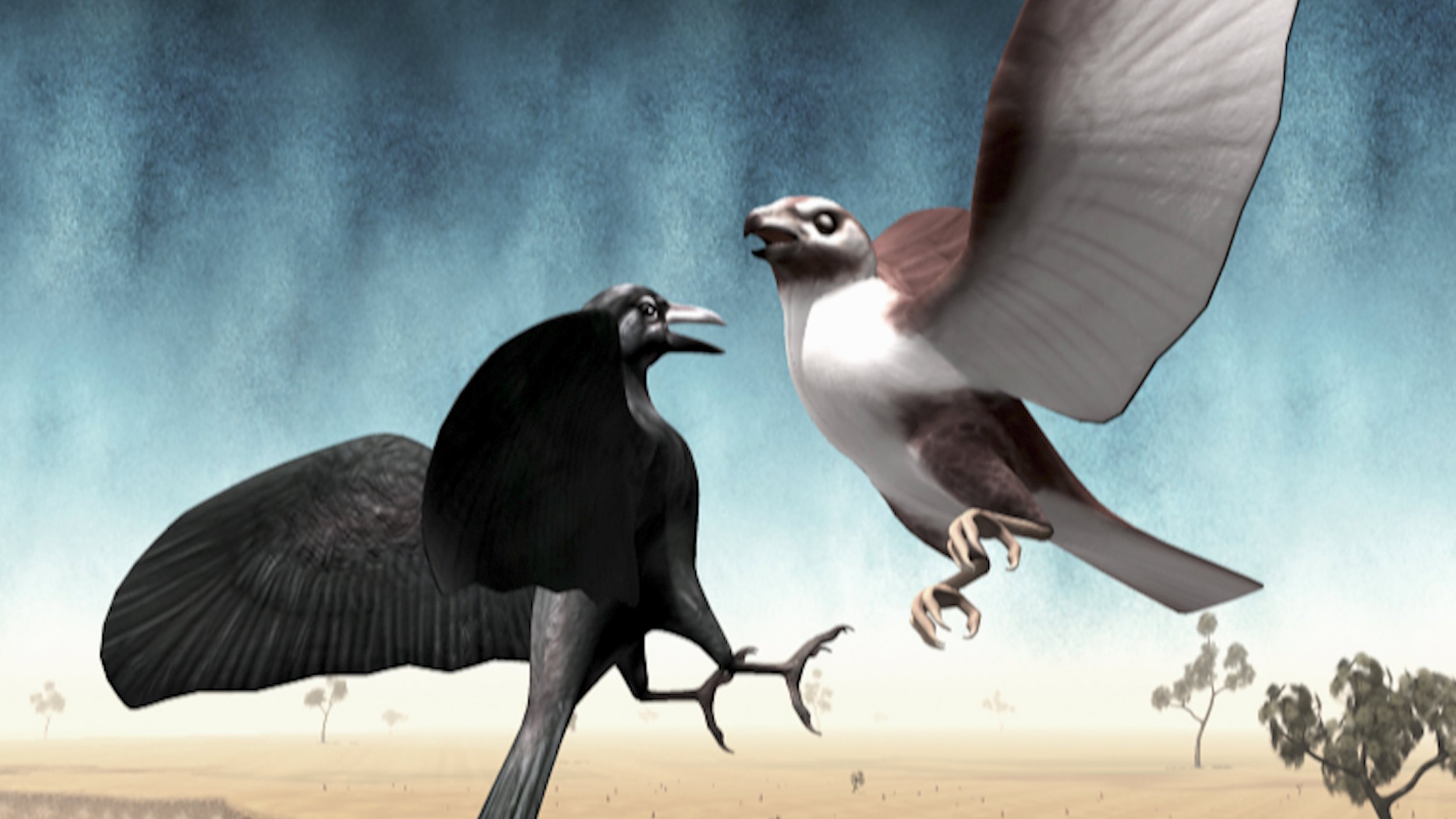

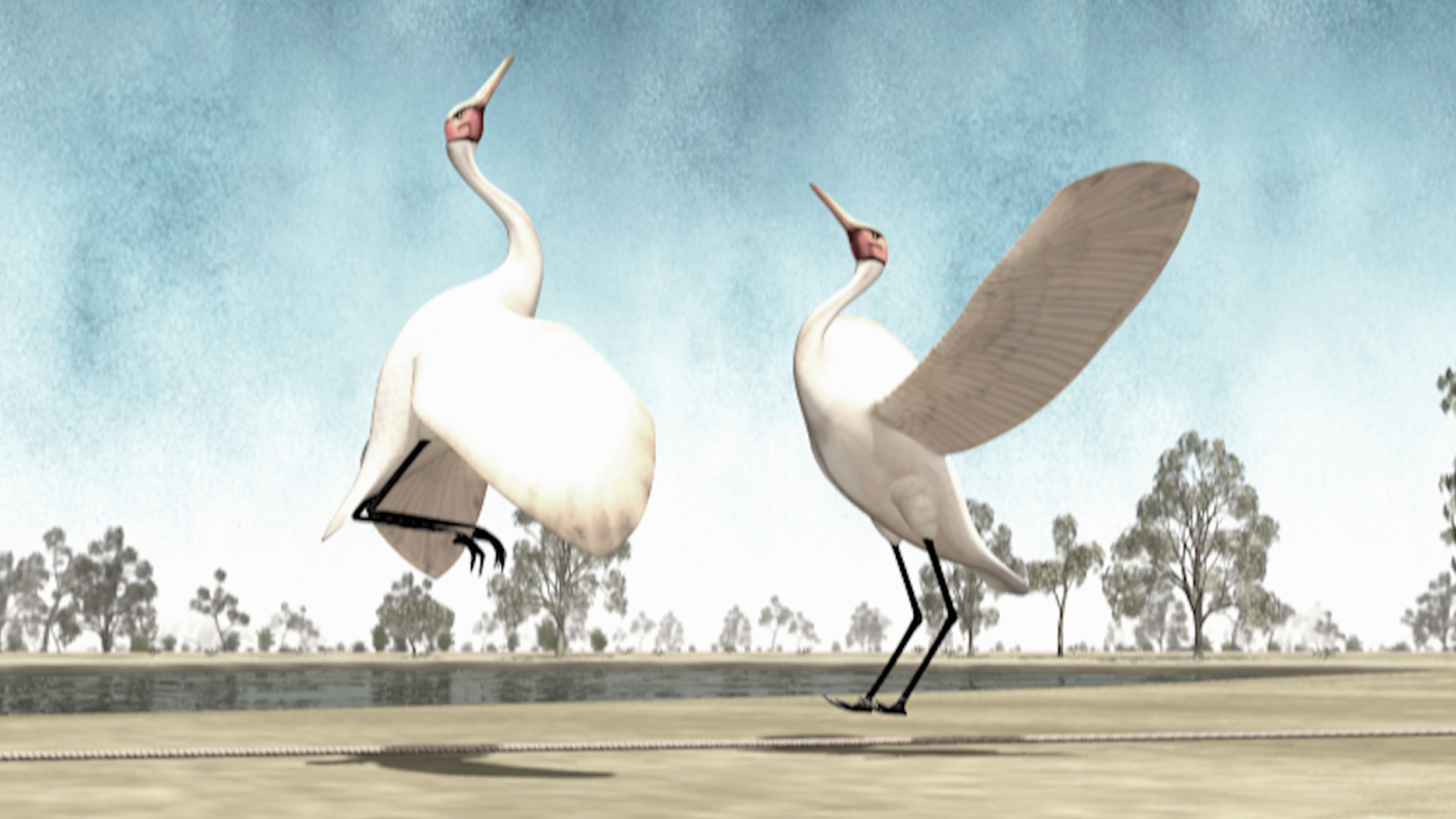

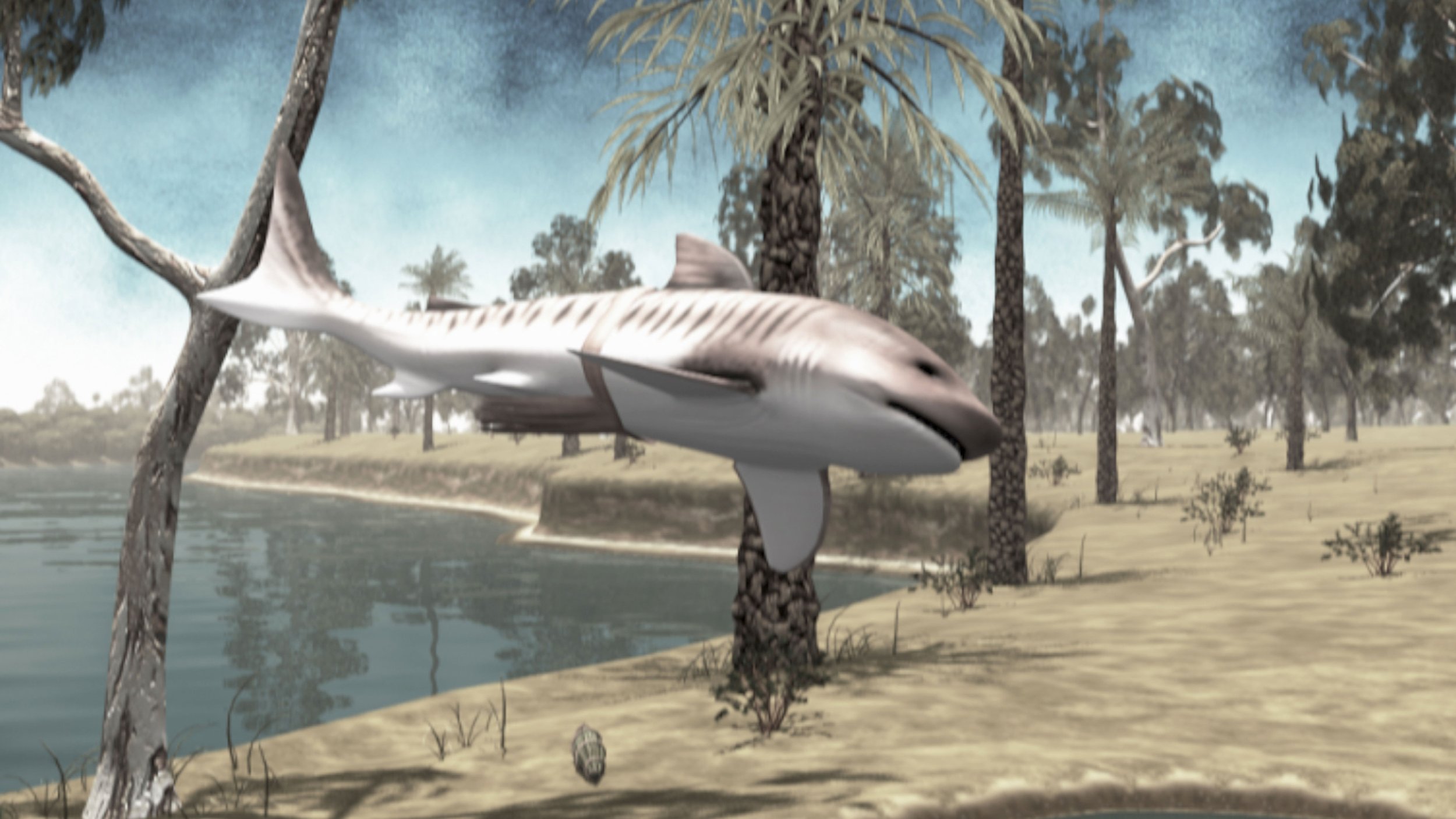

Things started to take off for Wunungu Awara in 2011 following a transformational gift from the Alan and Elizabeth Finkel Foundation in February of that year. The Monash Country-Lines Archive, Wunungu Awara’s original title, was launched at a Reception at the Monash City Conference Centre on 12 April 2011. As well as launching the MCLA program, the launch also announced the appointment of the Finkel Fellow, Dr Shannon Faulkhead. Shannon joined the team as the Indigenous community liaison, which branched the program out from working solely with the Yanyuwa community, reaching out to Indigenous communities Australia wide. The generous donation from the Finkels gave the team the ability to travel directly to the communities they were collaborating with. This greatly increased the effectiveness of the collaboration process, allowing the animation team and community members to foster strong relationships that ensured the accurate and respectful retelling of their traditional knowledge. Very quickly the several new communities had begun their work on story development and planning for animation production; the Yawuru from Broome, Taungurung from Central Victoria and the Garrwa from the Northern Territory.
With the Finkel donation Wunungu Awara was able to bring on additional animator Michael Lim to accompany Tom, Brent and Chandara. The team soon discovered that new relationships take time to build, as does all the preliminary work that is required before an animation can begin. With the Yanyuwa, this work had already been done by John and the community over several decades. With the new communities coming on board this preliminary work had to begin afresh; story consistency, script writing, character design etc. In the mean time, the animators needed something to do. After the first series of animations, Animation Director Brent D McKee wanted to improve upon several aspects of design and production workflow; pacing, narrative structure and visual style. It was decided that while the new communities were organising themselves, the team would tackle two more Yanyuwa animations, “Wundanyuka kulu Jujuju (The Sea Turtle and the Osprey,)” and “a-Kuridi (The Groper)”, both partially funded by the Northern Territory Government and the Australian Research Council. These two animations were completed by the beginning of 2013 with greatly improved pacing, character driven storytelling and elevated aesthetics, creating the blueprint of production for the next phase of animations for the Yawuru, Taungurung and Garrwa communities.
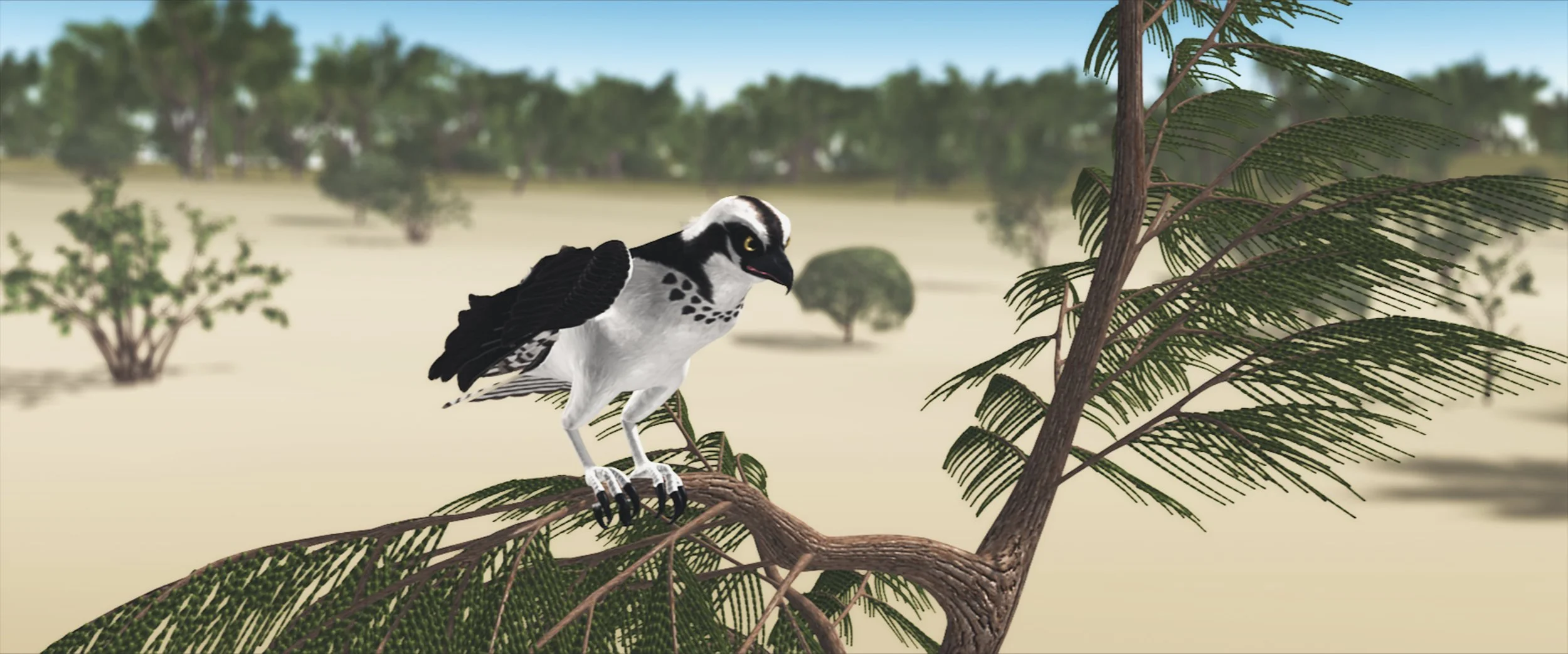


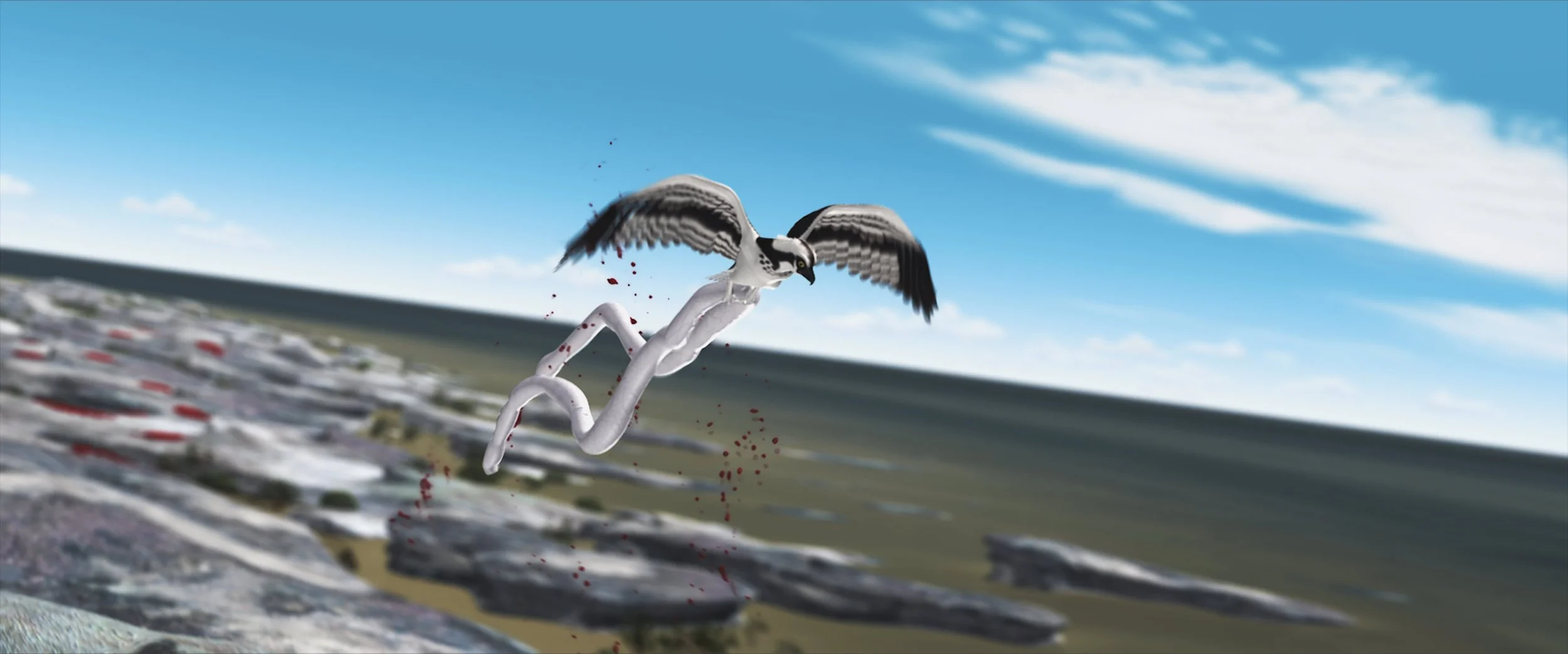
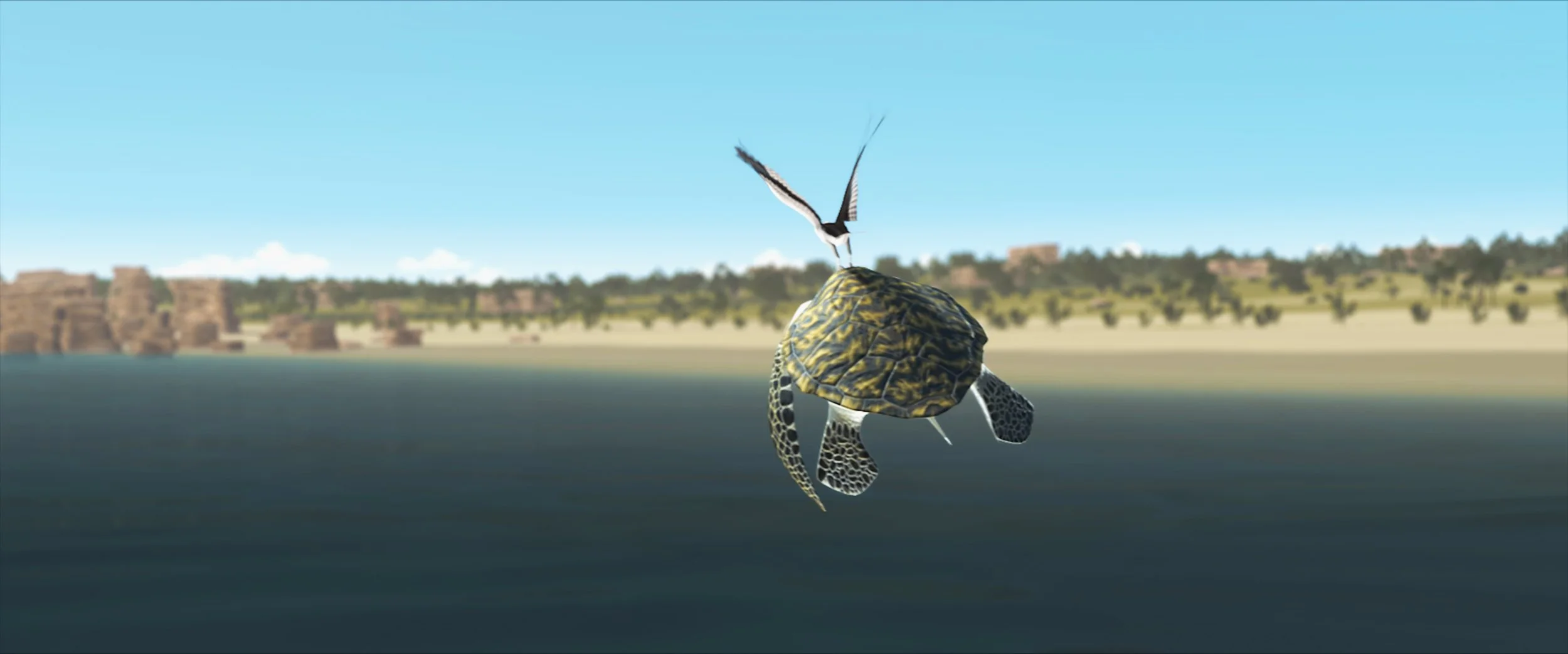







The team travelled extensively between 2011 and 2015, usually John, Shannon and Brent, collaborating with the various communities now in partnership. Several trips to Darwin, Broome and Borroloola, one trip to Arnhem Land. As well as a number of closer to home visits in Central Victoria for the Taungurung. The first new partnership came with the Yawuru from Broome. Here the team got to experiment with a more abstract art style for the visuals of the animations. The Yawuru had some local artists working on book illustrations that they wanted the animations to complement. This was a great experience working alongside other artists to achieve some unique animations.
Other communities were the Ngiyampaa of south-west NSW, Taungurung from Central Victoria, and Garrwa from the Northern Territory. For each community, the team tried to do something different, utilising the techniques they had employed in past animations and applying them to fit each story or song. The team found that a character-driven narrative didn’t always work, and sometimes a narrator would be required to complement certain story elements. They found that some communities wanted to go down a more realistic aesthetic where others liked a more abstract look. With each animation, the team worked on how they could improve their skills and add to the ever growing asset library, making each future animation that much easier to achieve.
Between 2013 and 2015 the team completed six animations; “Jibi the Giant Spirit Birds” and “Janyju The Red Lizard” for the Yawuru of Broome, “Purdiwan (Pretty One)” and “Marlukarra Ngarrkadabawurr Karnanganayi (Emu Hunters of Excellence)” for the Garrwa of Borroloola, “Welcome Baby to Country” for the Ngiyampaa of Western NSW and “Winjara Wiganhanyin (Why We All Die” for the Taungurung of Central Victoria.










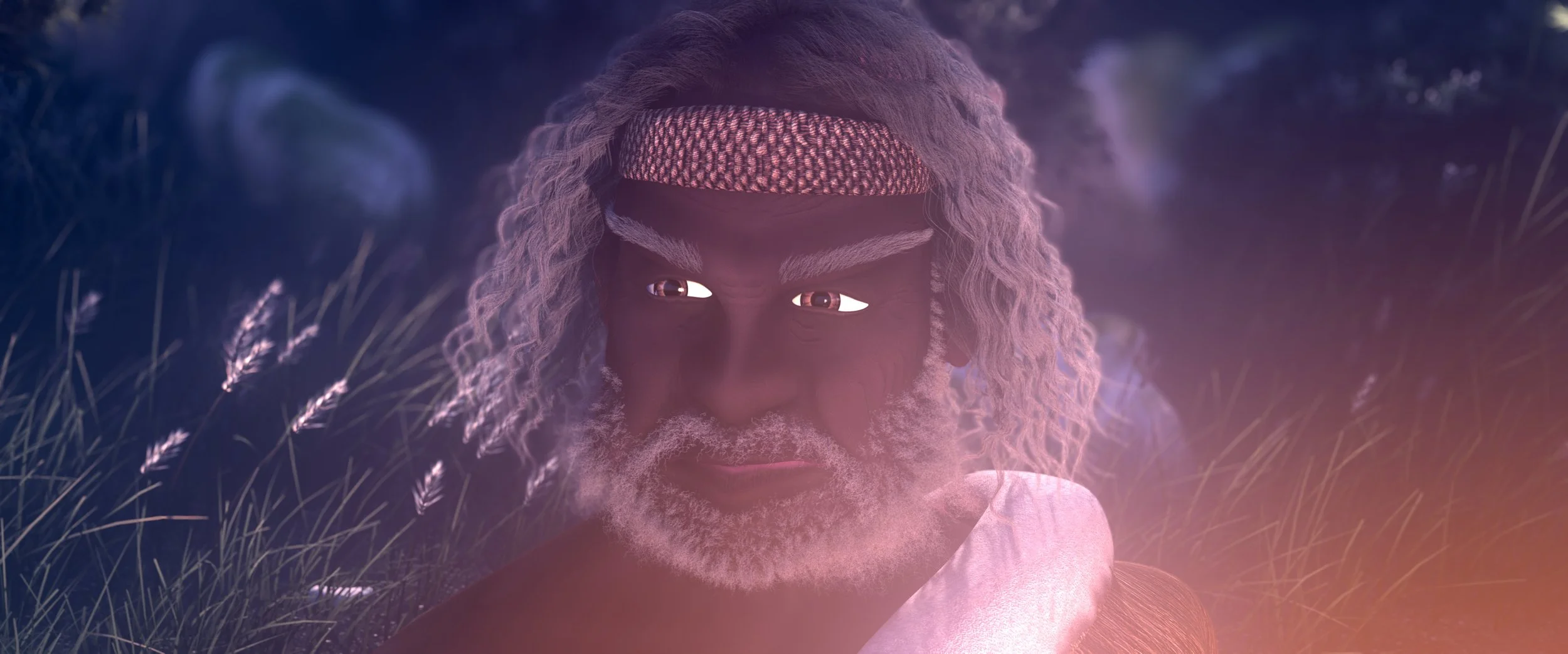




With each animation the team and the communities they collaborated with simply achieved more successful, more impressive results. After so many years perfecting their studio process the team could push their designs and cater their narrative techniques to suit each community and each animation individually, coming up with the best process to tackle each story or song. With the Gunditjmara of Western Victoria, Kaurna of South Australia and Gurindji of the Northern Territory, particular attention was placed during the next few animations on capturing traditional landscapes in an appealing and accurate way.
Many of these environments no longer exist in their traditional form; The Fleurieu Peninsula in SA, the fish traps of Lake Condah in Western Victoria or the farmland of Central Victoria all had to be digitally recreated in their pre-colonial state. This phase also saw some of our most successful animations, capturing the essence of the narrative and delivered them in a compelling manner that appeals to all ages, both Indigenous and non-Indigenous alike.
Between 2016 and 2018 the team completed five more animations; “Yagun Gulinj Wiinj (Why We All Die)” for the Taungurung, “Wangilatha Wangu nga Kiyawatha (Singing Songs and Telling Stories)” for the Tati Tati, Mutti Mutti, Latji Latji and Wadi Wadi languages of North Western Victoria, “Narnu & Tjilbruke - A Tale of Two Dreaming Heroes” for the Kaurna of South Australia, “Wawirrila karu Warrkuj Mani (The Kangaroo Stole our Brother)” for the Gurindji of the Northern Territory and “Pitthirrit (The Plover)” for the Gunditjmara of Central Victoria.

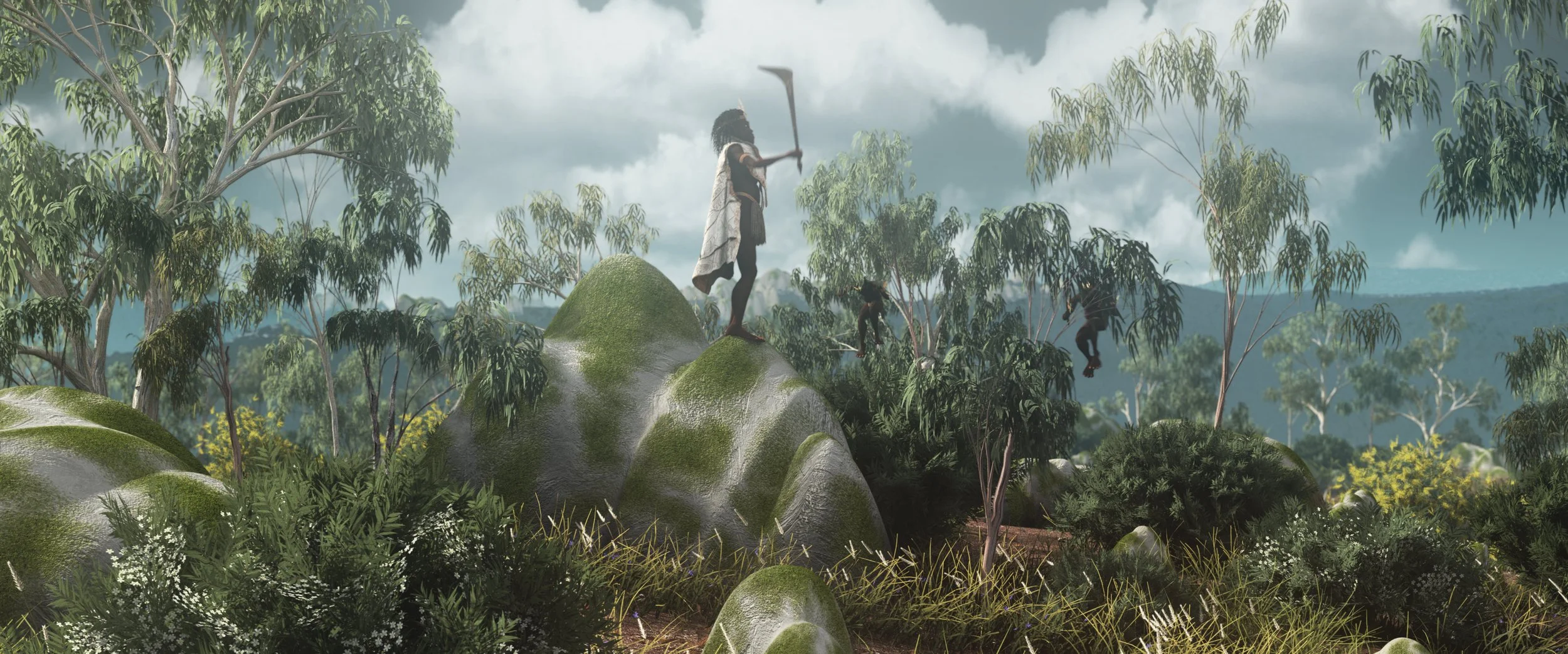


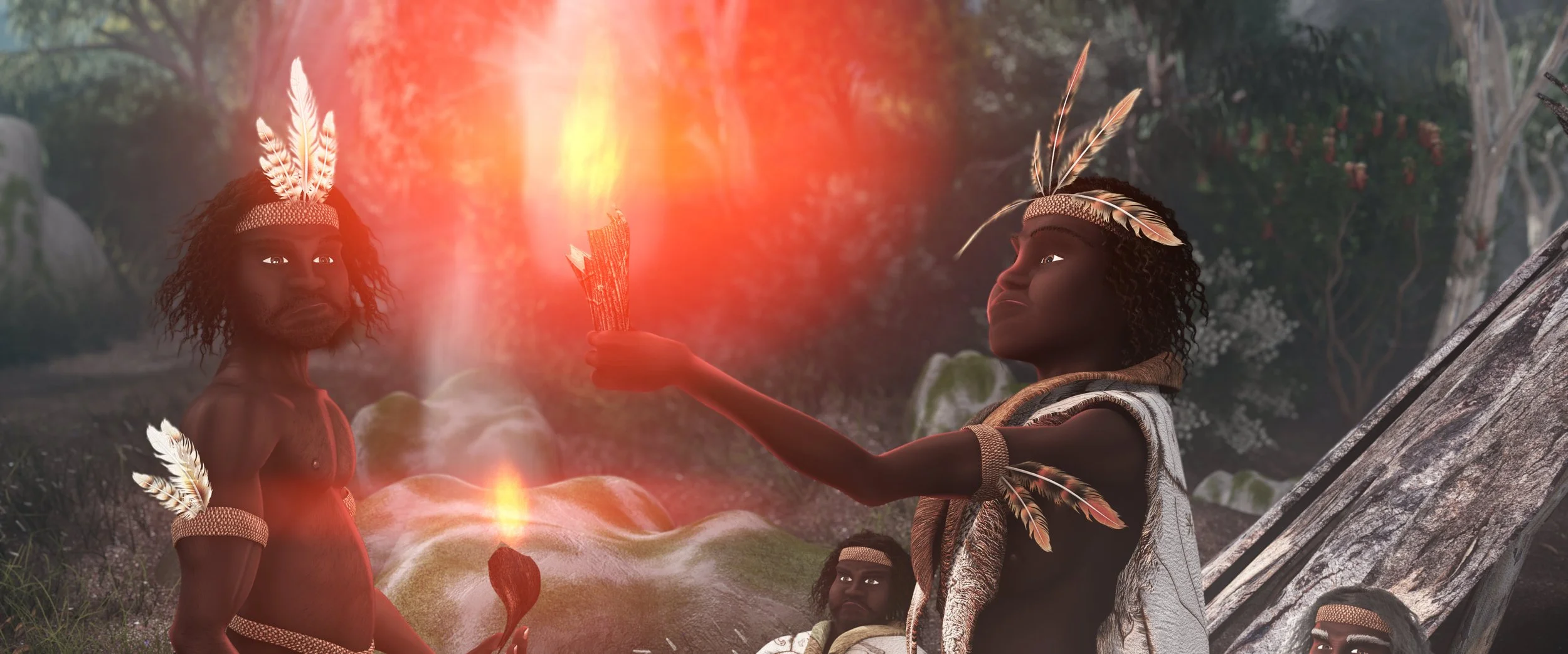
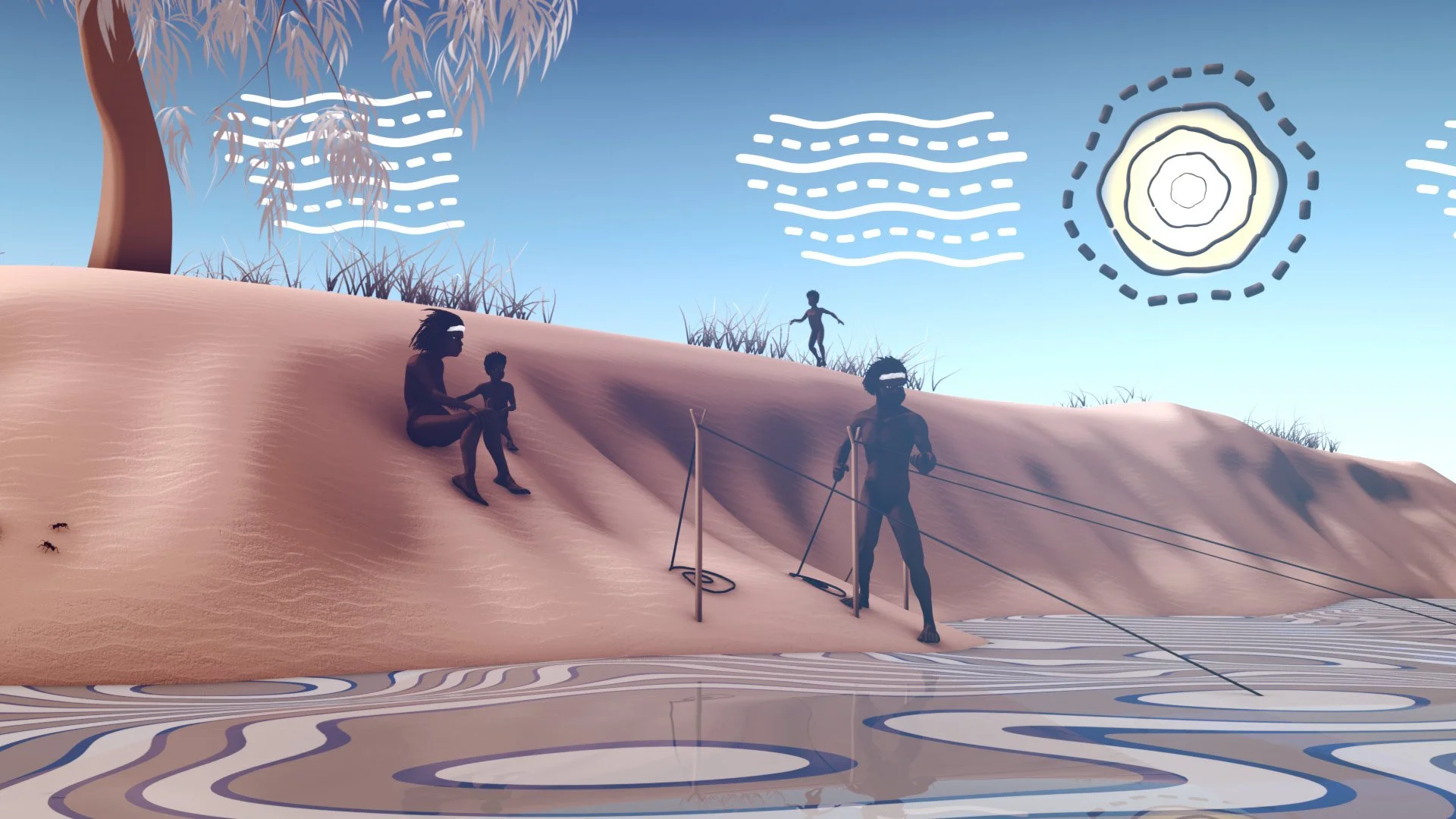









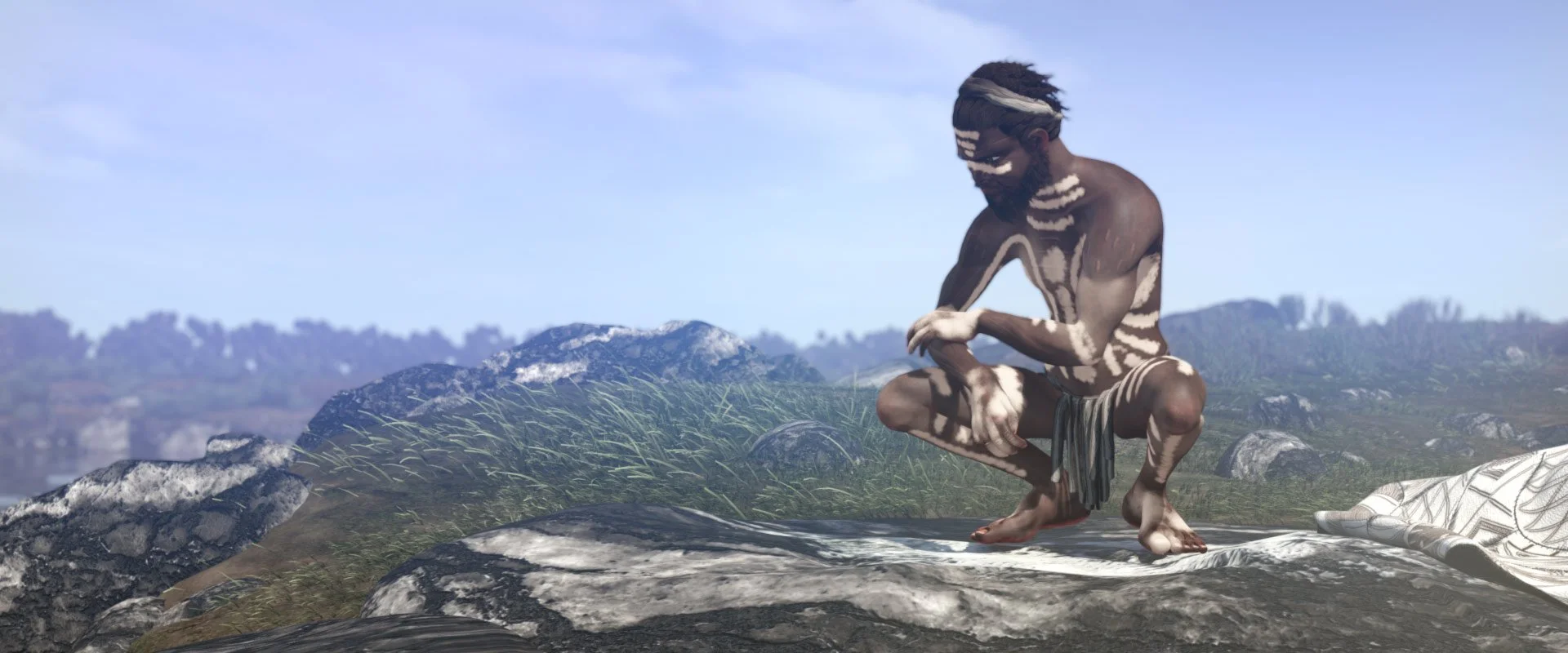


In 2019 Wunungu Awara received another generous donation from the Alan and Elizabeth Finkel Foundation allowing the team to continue expanding the archive for further five years, creating another series of animations in collaboration with various Indigenous communities from around Australia. This allowed the team to expand upon their previous success by updating a number of their studio processes. Butchullar songman Fred Leone came on board, replacing Shannon Faulkhead as Indigenous Community Liaison and Project Manager. With his contacts, Fred quickly began searching out more communities to join the collaborative archive.
By this stage the team had created an extensive asset library where they could quickly and effortlessly create almost any landscape on the Australian continent. The goal therefore became focusing their attention on the emotional deliverability of their animated characters. It was believed that being able to express a large range of human emotions meant that audience could better engage with the content being delivered. To aid in this, musician and sound designer Samuel Pankhurst joined the team to add another dimension of emotional engagement creating original music for each animation.
The first trial for this was with the poem “My Dad” animated for Uncle Jim Berg of the Gunditjmara. Here, the team set the story in a small enclosed forest. This allowed them to focus their attention on the emotional content of the poem, portrayed through the two main animated characters. To achieve this, they focused a lot of their development attention on having a large range of facial expressions. In the process, they created a streamlined workflow that could quickly be added to give emotional performances to any of their characters, whether human or animal. This went a long way in how they could deliver the narrative content of the stories, creating compelling and interesting animations that people of all audiences would want to watch, further helping secure this knowledge transfer and preservation.
Between 2019 and 2023, the team completed another six animations; “The Spirit Men of Nalangkulurru” for the Wilangarra of the northern Territory, “Mayapa-u Budj Bim (The Creation of Budj Bim)” for the Gunditjmara, “My Dad - A Poem by Uncle Jim Berg” a senior Gunitjmara elder, “The Sea is Not Empty” for the Marra people of the Northern Territory, “K’Gari Nangarim (The Creation of K’Gari)” for the Butchullar people of Eastern Queensland and “The Songs from the Gulf Country”, a collection of contemporary Yanyuwa song poems.
In 2023 the Wunungu Awara team also collaborated with the mental health advocacy oragnisation Emerging Minds to create “Replanting the Birthing Tree”, an anthropological collection of traditional Indigenous Australian practices relating to birthing and the family unit.



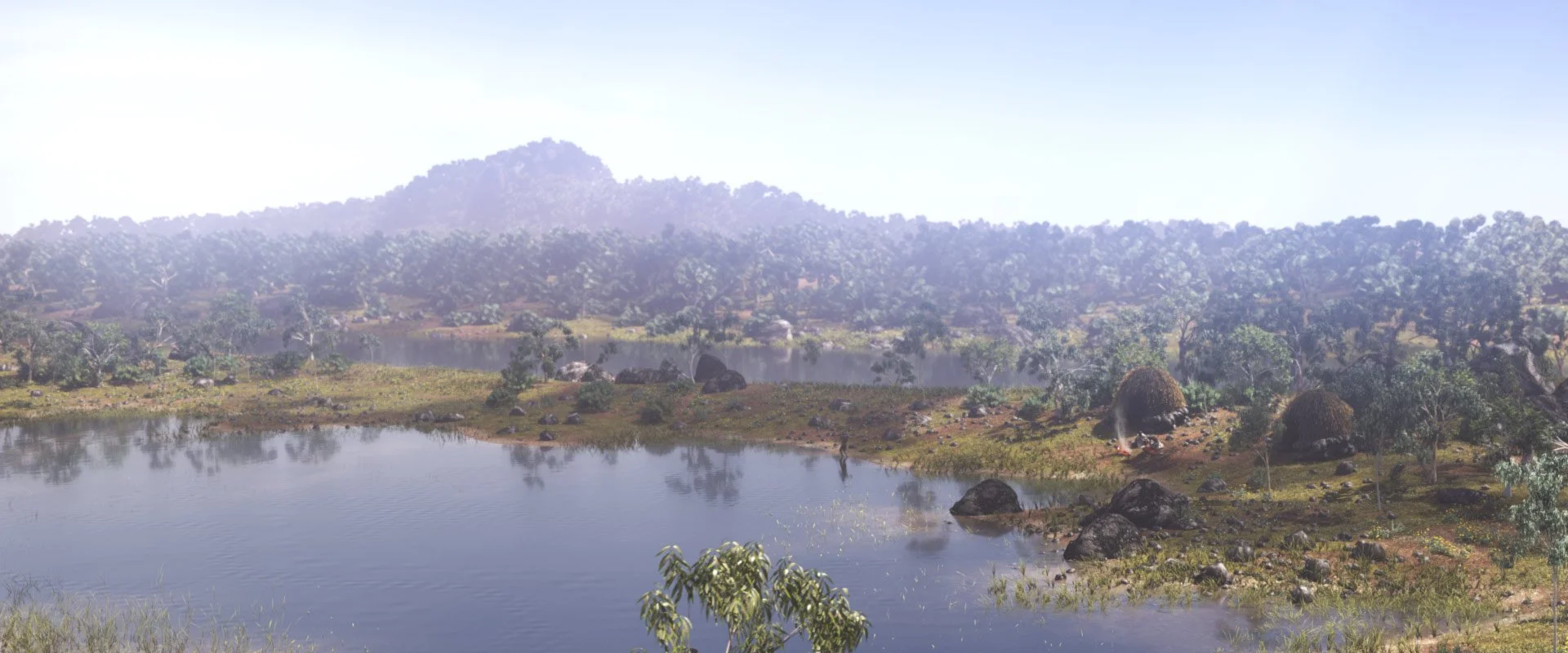










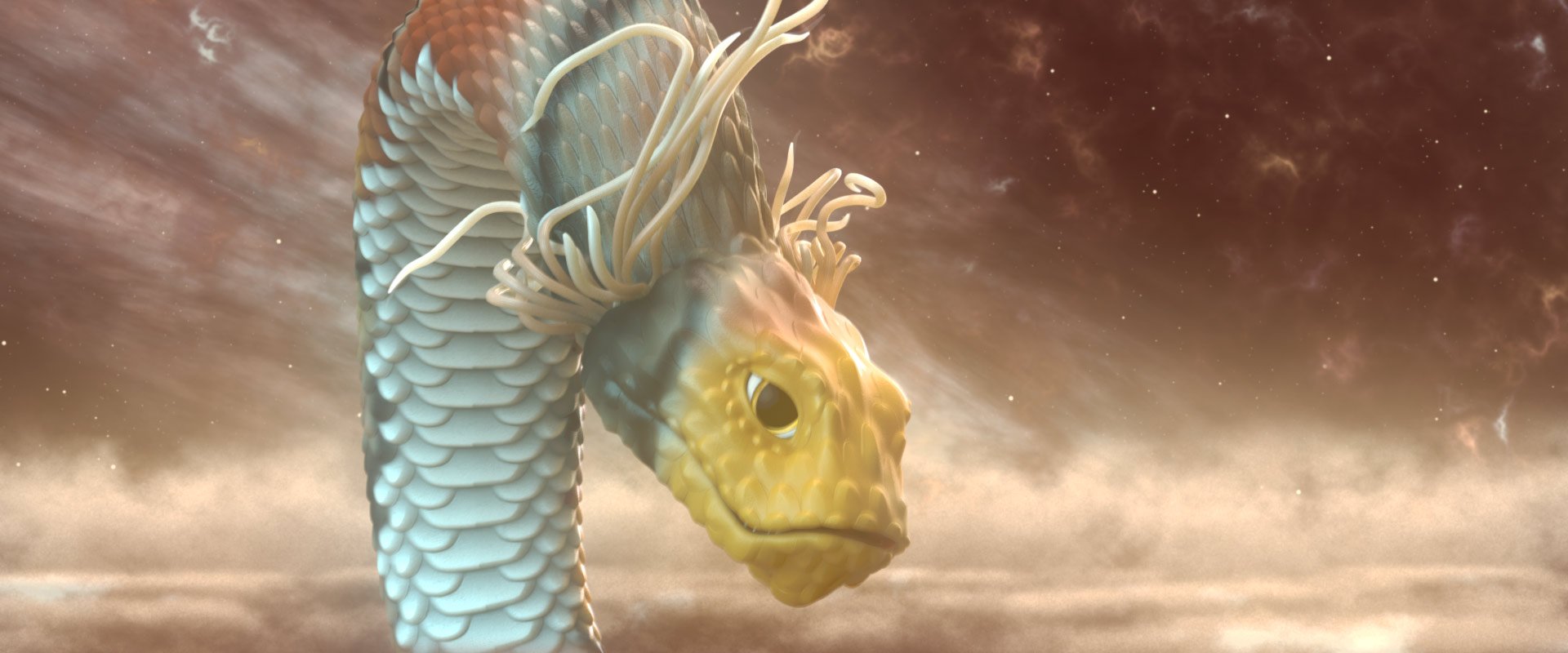

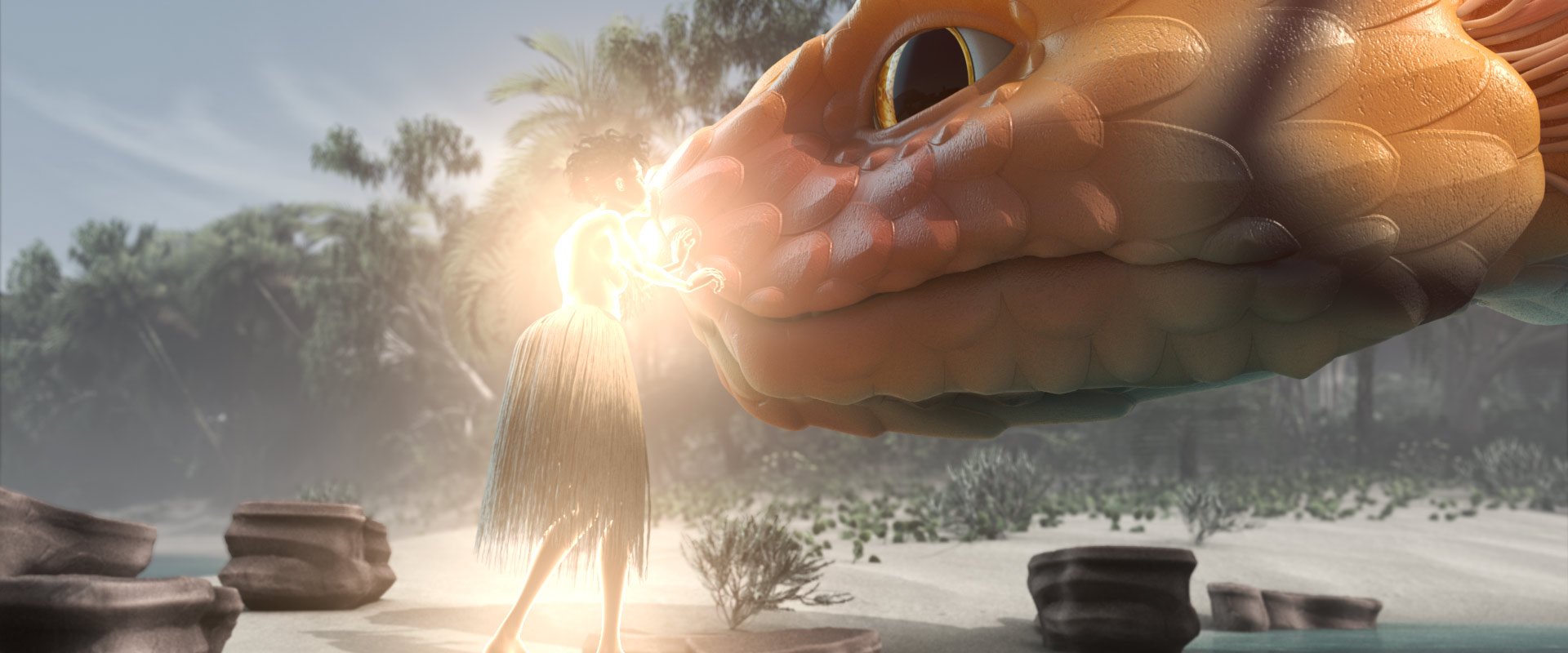







Between 2020 and 2023 the Wunungu Awara team also worked on their Magnum Opus, “Duwarra Wujara (Two Young Men)”, a 26 minute epic animated short film depicting the traditional Yanyuwa narrative. The screenplay for “Duwarra Wujara” was written by 95 year old Yanyuwa Elder Dinah Norman a-Marrngawi and depicts the version of the story as told to her by her parents and grandparents, passed down this way from generation to generation.
Wunungu Awara team founders John Bradley and Brent D McKee were honored to receive the Yorem Gross Award for Best Australian Animated Short Film for “Duwarra Wujara” at FlickerFest 2024 in Sydney as Co-Directors.

















Three animations currently remain in production at Wunungu Awara; “Kungkarangkalpa (The Seven Sisters)” for the Pitjantjatjara people of Central Australia as well as “The Peewee and the Frog” and “The Python and the Brolgas” for the Garrwa people of the Northern Territory.
Wunungu Awara is excited to continue creating world class animations in collaboration with Indigenous Australian communities, and continuing to grow the animated archive of Indigenous knowledge.



